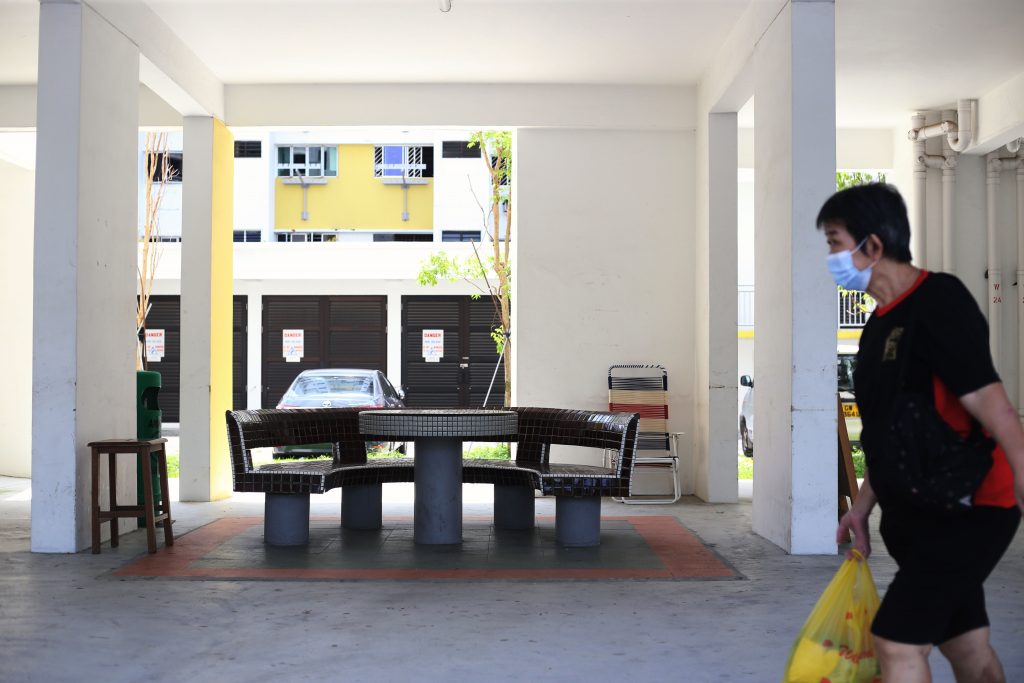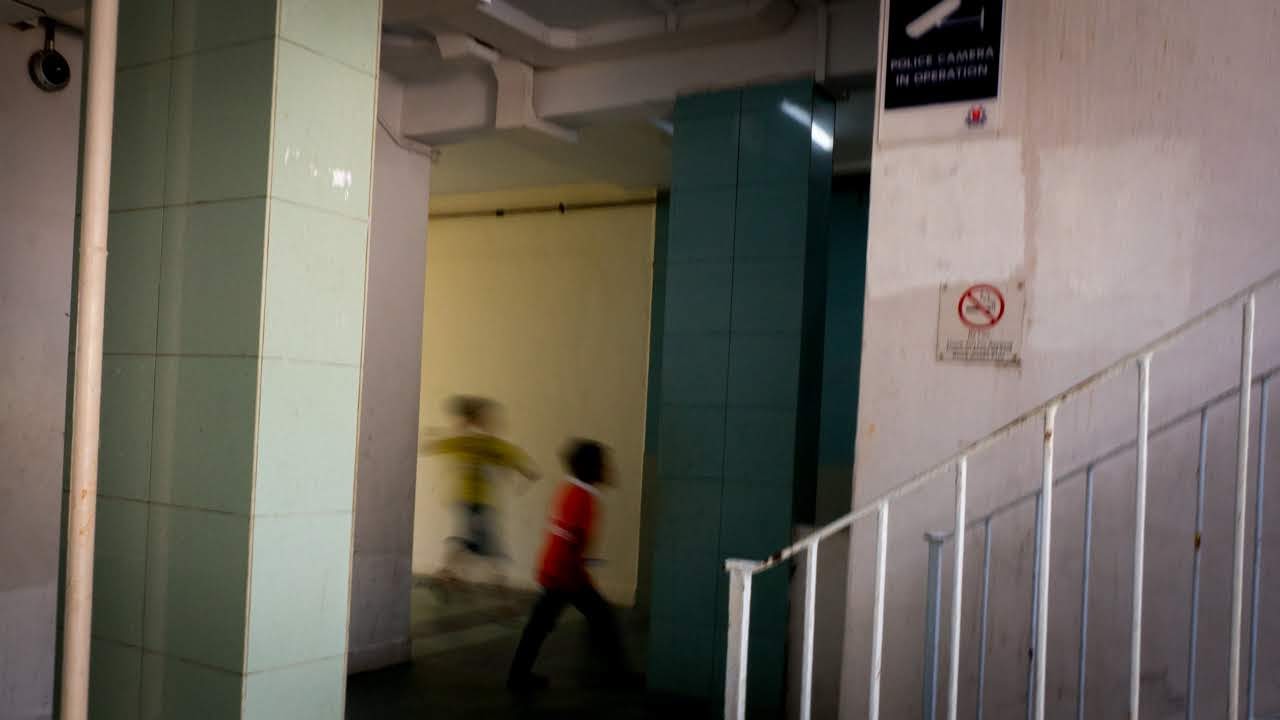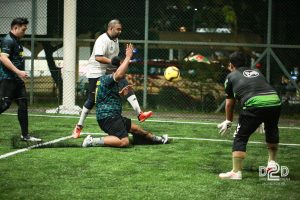Top Image: Zachary Tang / RICE File Photo
The concept of the Singapore void deck seems contradictory. For one, the word ‘void’ gives off a soulless vibe (it literally means ‘emptiness’). To a certain extent, it rings true. Besides checking your letterbox, there is no other reason to linger there.
Yet, void decks are anything but bare and bleak. It is part and parcel of our daily lives—a space for the celebration of unions, mourning the passing of loved ones, and whiling away lazy Sunday afternoons with family, friends and neighbours.
They’re communal spaces. Almost always full of activity, rarely void.
When the void deck isn’t a venue for a wedding or a funeral, they’re occupied by children from the surrounding estates. Most of the time, they’re playing football. The space between neighbouring pillars becomes goalposts. The bare concrete transforms into a football court.
In November 2023, children living in the vicinity of Block 638 Woodlands Ring Road could no longer turn the void decks into their personal sporting arenas. Sembawang Town Council partially cordoned off the void deck of the housing block in response to noise complaints.
Red barricades split the void deck in two. Within the cordoned-off area are two signboards—both signs warning against playing football at the void deck. Two similar signs to drive the message home.
While void deck football has never been allowed in the first place, we can only hope physical cordons (as seen before in Queenstown, Tampines and Hougang) to prevent children from playing is a temporary solution to the problem.
After all, if other void decks continue to be cordoned off, we only need to look to its name to determine its fate—that it will indeed live up to its name as an empty space.
What We Do at the Void Deck
Singaporeans who spent their childhood at the void deck seem to agree. 27-year-old civil servant Kevin Monteiro sees the void deck as a “vital part of his childhood”. Back then, he’d be at the void deck close to three times a week, playing football with his cousins and whoever decided to join them.
“Once, there was someone who joined us for two or three hours. We ended up being casual friends after he joined us two or three more times. Years later, we ran into each other at a proper football field. It was a ‘Are you who I think you are?’ moment. Random, but it was the void deck football connection,” he recalls.
It’s unlikely our void decks will produce Singapore’s next Fandi Ahmad—a common argument for letting children play football at the void deck. It is, however, more likely that void deck football plays the role of being an informal social hub.

There are few greater equalisers than void deck football. The underlying ridiculousness of playing football at the void deck unites Singaporean children across public residential estates. We participated in its absurdity and wore it like a badge of honour.
After all, what’s sillier than coming together and agreeing that this bottle cap is now a ball? What’s more ridiculous than assigning the space between two objects as a goalpost? What’s more bizarre than celebrating the kicking of said bottle cap between two slippers as if you really did something awesome?
Bryan, a 28-year-old youth social worker, concurs. He spent his time after school around the void decks of his residential estate in Sengkang.
“When school ends at about two to three in the afternoon to about dinnertime, your parents or siblings would scream from upstairs for you to come home.”
As a youth social worker, void decks are important to him as spaces for children to play. “Seeing different areas to play closing down is a bit upsetting,” Bryan explains.
“I do youth outreach as a social worker. The youths I speak to tend to play sports like soccer. If there are no positive and healthy ways to express themselves, where would they go? At least the void deck is in the public eye.”
I share the same fondness for void deck football with Kevin and Bryan.
Every day at four in the evening, residents from the surrounding estate gathered at a circular, open-air public space—a space mainly used for community events— to play football. It was an open defiance of a “No Football” sign hung prominently on one of the surrounding lampposts.
Our goalposts would be plastic bags weighed down with reused 1.5-litre Coke bottles filled with water. We joked that we were the first to invent goalposts which doubled as hydration stations. It wasn’t only children that played. Some came down with their fathers. One father-son pair drove down almost every day even though they had moved to another neighbourhood.
It was void deck football that gave me friends I would not have had the chance to meet and taught me how to work in different teams and manage conflicts. They’re core childhood memories.

The Governance of Fun
While Singaporeans hold memories of their childhood dearly, that doesn’t take away from the valid reasons for disallowing kids from kicking around a ball at void decks.
One can only hear celebratory shouts of “Siuuuuuu” so many times before snapping and complaining. Residents living on lower floors shouldn’t fear getting their windows cracked by projectiles. And no one—especially the elderly—should have to dodge flying soccer balls just to get home or walk around the neighbourhood.
Void decks will continue to be communal spaces even if an active task force were set up to police children playing football there. Void-deck weddings and funerals will continue to thrive. After all, there are other conducive spaces (school fields, futsal courts, etc) for people to play proper football.
But that’s exactly what makes void deck football so special: It’s stupid fun. And more importantly, accessible at any time for kids in the neighbourhood. It’s precisely because the void deck was never the right place to play football, and there was never the right time to do it.

According to researchers Dr Eli Elinoff and Dr Jamie Gillen from Victoria University of Wellington and the University of Auckland, designating ‘fun activities’ to take place at particular places and specific times runs counter to the inherently spontaneous nature of fun. According to their study, it takes away some of the fun itself and limits the “fun-seeking undertaken by Singaporeans”.
Kevin, who organises community events to foster social ties among neighbours, sees the same phenomenon in his work. “I feel relieved when a big community event goes well. But what I find more joy from is actually spontaneous, more impromptu, almost unplanned events that happen.”
Perhaps it’s why Kevin and Bryan feel strongly about void deck football. There’s undoubtedly a sense of nostalgia, but it also harks back to a time when the idea of childish tomfoolery had no strings attached.
After all, commuting to a facility where you’re allowed to have fun takes away some of the impulsive joy. Kevin and Bryan spent their time at their void decks in Bedok and Sengkang without that pressure.
No other incidents of cordoning off of void decks have been reported since. However, the reliance on extreme solutions like physical barriers can set a precedent for the same in the future, creating unnecessary anxieties among children who want an accessible place to just be kids. Not everyone can afford the cost of playing at a sporting facility.
“Speaking from my experience as a social worker, I know the youths playing football at the void deck always have this sense of fear. They’re always on alert, even if it’s just a simple passing game,” Bryan explains.

Spaces for Stupid Fun
Beyond just the impact on building an organic sports culture, it speaks volumes when Singaporeans have to resort to calling the police on kids for simply being kids. Municipal authorities have little choice but to act on repeated residential complaints. When we see physical barriers set up, it feels like yet another aspect of communal culture being structurally suppressed.
We all want the education system to reduce the over-emphasis on grades and have students engage themselves in other life experiences. The void deck is one of those places that afford the opportunities to do just that.
There is no shadow of a doubt that future generations of kids will look at a void deck’s vast expanse and think ‘play’. There will be children who naturally, almost instinctively, use empty bottles and bottle caps when a football is nowhere to be found. And let’s be honest—barrier or no barrier, kids will find a way to entertain themselves by finding new ways to kick something around among themselves within the confines.
Void decks will continue to be communal spaces for events and gatherings. But on their off-days, when void decks are void of community events, they should be spaces for spontaneity.
They should be spaces for stupid fun.







